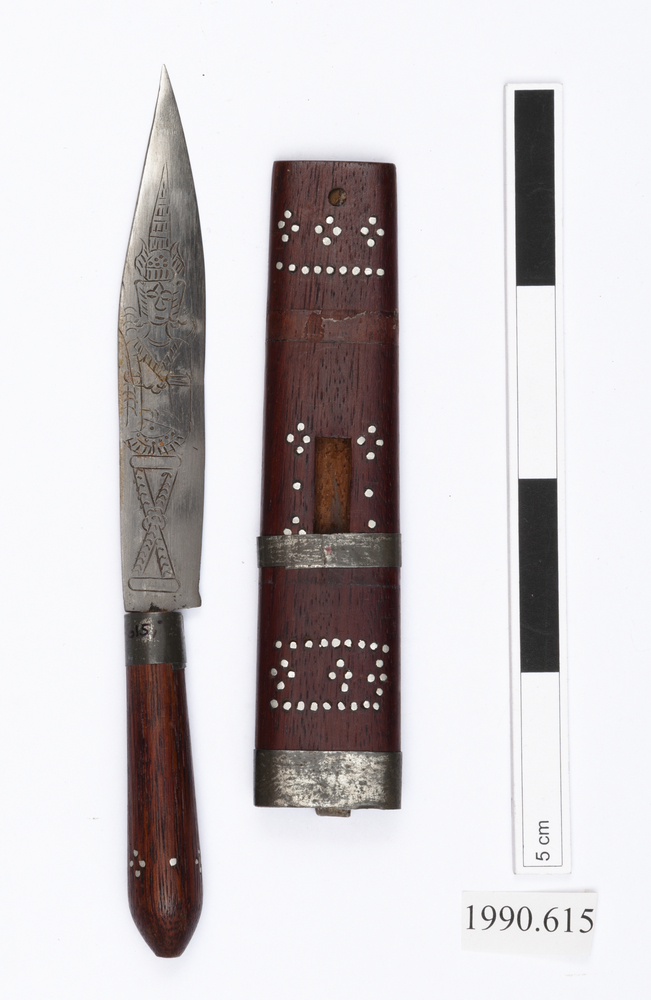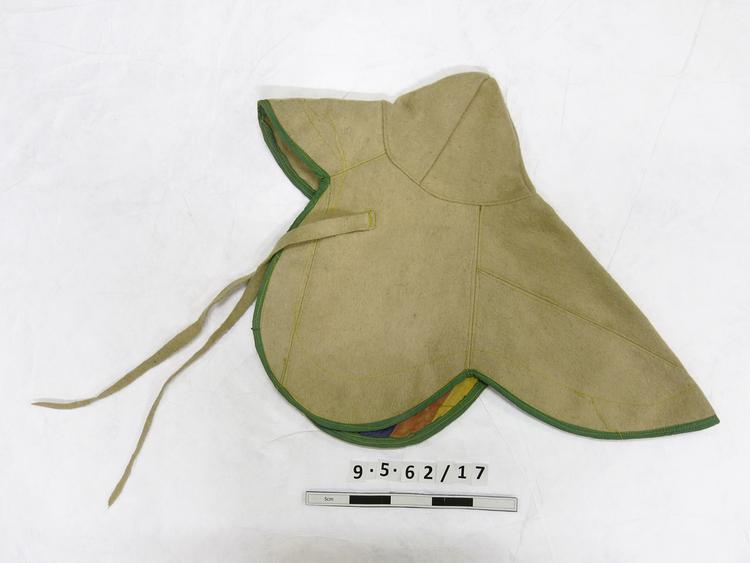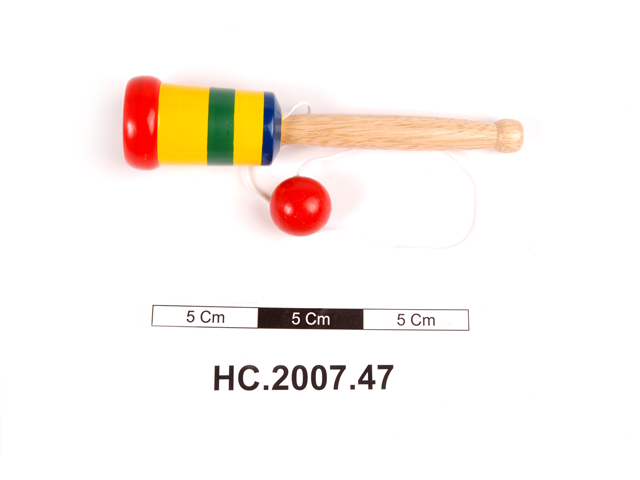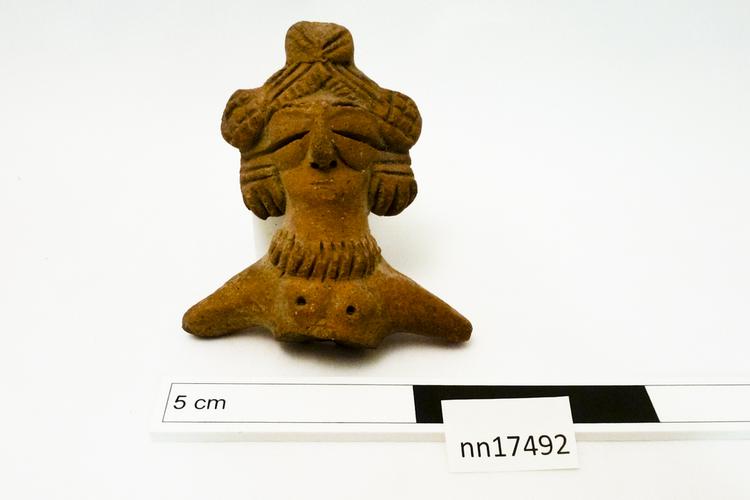
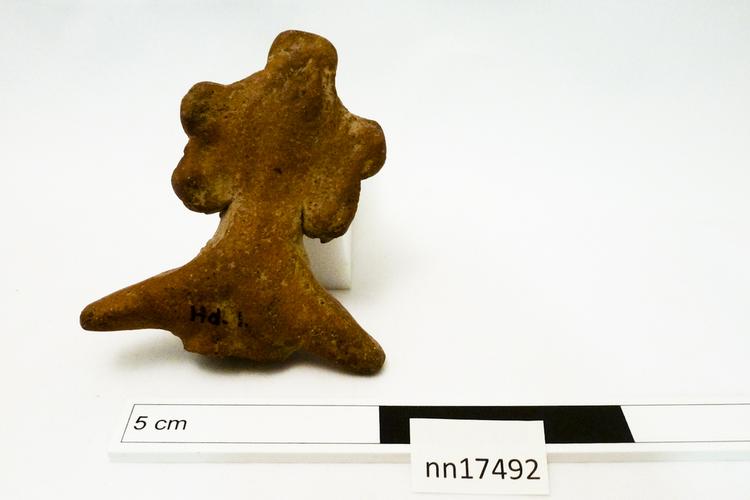
Gandharan terracotta figure of the upper part of a female with an elaborate hairstyle and a necklace.
Head, shoulders, arms and breasts of a standing female human figurine of Sar Dheri type: short outstretched arms, small appliqué breasts, thick choker necklace decorated with vertical incised lines, slit appliqué eyes, coiffure decorated above the brow with three incised ornaments and the hair dangling over the ears in a pair of thick plaits. The back is plain. This is a votive object, and as must be true for all such figures from this area represented a nature or fertility deity, or even a specific yakṣiṇī, or guardian nature spirit (female equivalent of the male yakṣi). Marked on the back with 'Hd. 1' (probably from Hatim Dheri, an ancient site on the Mardan-Swabi road, close to Budsarai where there was an ancient site in Gordon’s time). In the British Museum there is at least one sherd from Hatim Dheri, presented to it in 1961 by Mrs D H Gordon and said to date to the 5th century, though this late date can have no real bearing on the date of this undoubtedly earlier terracotta figurine in the Horniman collection. Archaeological context: presumably unstratified and from a surface collection. Early Historic Period, late centuries BCE. Given by Col. D H Gordon (1952/3).




